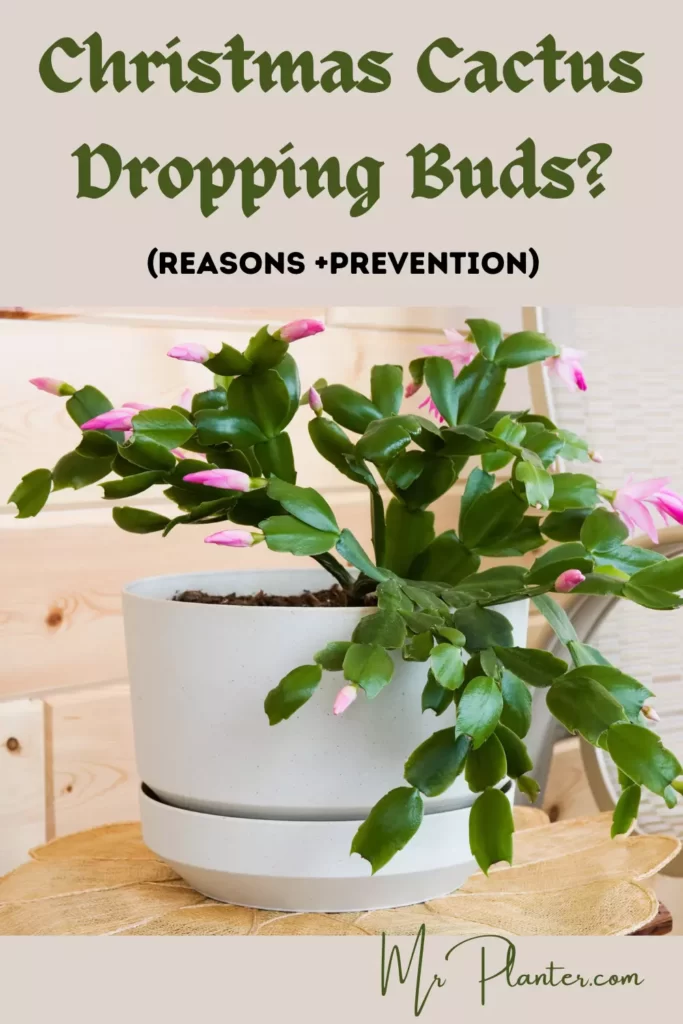Christmas cactus (Schlumbergera) is an exquisite succulent that captivates many with its vibrant blooms, particularly during the holiday season. When buds start appearing on your Christmas cactus, it’s a profound sign that the plant is gearing up to reveal its stunning flowers. This phase indicates that you have successfully navigated the care requirements for this delightful houseplant. However, the journey doesn’t stop here; understanding what happens next is fundamental to ensuring that your cactus thrives and showcases its beauty to the fullest.
Understanding the Budding Process
The formation of buds on a Christmas cactus is a complex process influenced by various factors. When the plant senses the changing light conditions and temperature differences typical of fall and winter, it triggers a natural response to prepare for flowering. This initiation of bud development usually begins in late autumn when daylight hours decrease significantly. The magic of this metamorphosis relies on a combination of environment, care, and physiological readiness.
Moreover, hormonal changes within the plant play a crucial role. As the days grow shorter, a hormone called auxin concentrates in the plant, prompting the initiation of bud formation. It’s during this time that ensuring proper conditions becomes instrumental in nurturing your budding plant. Pay attention to light exposure as well; while indirect sunlight is optimal, too much direct light can scorch the leaves, inhibiting healthy bud development.
Caring for Budding Christmas Cactus
Once buds appear, proper care is paramount. It is essential to strike a balance between moisture and nutrients, as both are vital for sustaining the budding process.
Watering practices require particular attention. Christmas cactus thrives in a soil mix that offers good drainage. Overwatering can lead to rot, while underwatering may cause the buds to drop prematurely. A general guideline is to water the plant when the top 1-2 inches of soil feel dry to the touch. When watering, do so thoroughly until it drains from the bottom of the pot. This practice encourages healthy root development while preventing stagnant water.
Fertilization is equally significant during the budding period. An appropriate fertilizer that is high in phosphorus can promote robust flower development. A diluted liquid fertilizer can be applied every two weeks during the growing season—early spring through summer—to support overall health and vigor. However, it is essential to cease fertilization once the plant begins to bloom, as too many nutrients may hinder flowering quality.
Potential Challenges During Bud Development
One of the most pressing concerns is bud drop, which can occur for various reasons, including sudden changes in temperature or humidity. Christmas cacti prefer stable conditions; fluctuations can stress the plant, leading to bud loss. To prevent this, maintain consistent indoor temperatures, ideally between 60-70°F, and ensure humidity levels are sufficient, particularly in dry winter months. Using a humidity tray or a room humidifier can alleviate dryness.
Pest infestations are another potential pitfall. Common pests, such as mealybugs or spider mites, can become detrimental if not checked in time. Regularly inspect your holiday cactus for any signs of infestations. If detected, you can combat pests using insecticidal soap or neem oil, carefully following the product instructions.
Expecting Your Christmas Cactus to Bloom
The reward for diligent care is an explosion of color as your Christmas cactus begins to unfurl its flowers. Typically, the blooming period occurs from late November through January, coinciding with the holiday season, which is when these cacti earned their name. The flowers can range from vibrant pinks and reds to soft whites and purples, captivating anyone who beholds them. Spectacular, zig-zagged leaves accentuate each blossom, creating a stunning visual display.
It’s essential to resist the temptation to move the plant excessively during the blooming period, as consistent positioning helps ensure the best performance of flowering. However, rotating the pot slightly to promote even light exposure can be beneficial. It is in these moments of tranquility when the festive spirit of the holiday season is truly reflected through the blossoms of your well-cared-for cactus.
Post-bloom care is equally important. Once the flowering period concludes, promptly trim back any spent flowers and monitor the plant’s overall health. Gradually reduce watering to allow it to rest before the next growth cycle begins. The key to maintaining the lushness and vitality of your Christmas cactus lies in recognizing the delicate balance of care it requires.
In conclusion, the budding and blooming process of a Christmas cactus is a seasonal marvel. By understanding the intricacies of bud formation, catering to the plant’s water and nutrient needs, and proactively addressing potential issues, you can ensure that your Christmas cactus delivers a stunning floral display, celebrating the joyous spirit of the holidays.





Leave a Comment